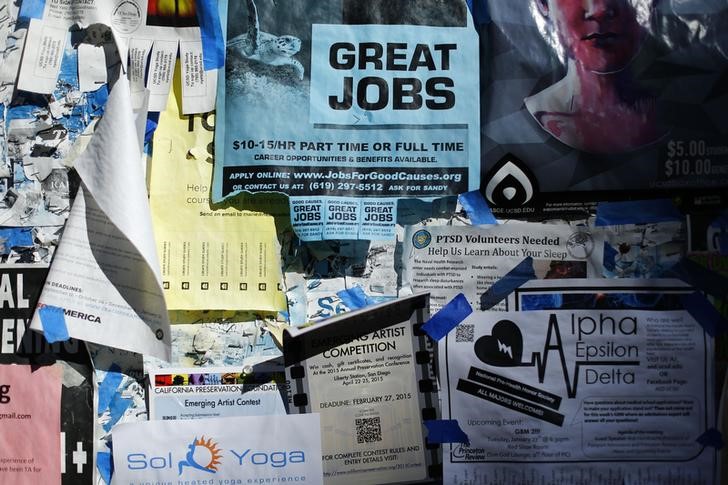Investing.com - The U.S. labor market in February presented a mixed picture as job creation ground to a near-halt, while the unemployment rate dropped by more than expected and wage inflation accelerated beyond forecasts.
Nonfarm payrolls (NFP) rose by 20,000 in February, a sharp slowdown from the 311,000 posts created the prior month and well below consensus expectations of 181,000. Employment in professional and business services, health care, and wholesale trade continued to trend up, while construction employment fell, the Bureau of Labor Statistics said.
Markets reacted negatively to that headline number, before trimming losses as they absorbed the significance of the more positive elements. The jobless rate dropped to 3.8%, further than analysts' estimates for 3.9%. Meanwhile, wage inflation grew 3.4% on an annualized basis, up from 3.1% in the year through January and topping expectations for a 3.3% increase.
"Don't hit (the) panic button," said Dean Baker, an economist with the Center for Economic Policy Research in Washington, via
.
Baker said that a sharp drop in hours worked was potentially even more worrying than the headline jobs number, but added that "bad weather could have been a factor."
At 8:55 AM ET (13:55 GMT), S&P 500 futures were down 0.73%, having been down 0.47% before the release. The benchmark 10-year Treasury yield fell initially but then rebounded, to be down only 1 basis point from before the release at 2.63%.
The dollar index, which measures the greenback against a basket of major currencies, dipped slightly to 97.310, but was still up sharply from 24 hours earlier.
Over the first two months of the year, nonfarm employment rose by a total of 331,000, or an average of 165,500 a month. That's a little more than 10% below the average rate of 186,000 for the last three months, the BLS said.
The slowdown in jobs creation, although worse than expected, seems to finally have caught up with economic theory. A long expansion in the American labor market has been reducing slack, providing less and less room for further job creation in an economy that is near full employment.
That is starting to be felt in wage growth. Average hourly earnings rose 0.4% on the month, above forecasts for a 0.3% rise, and by 3.4% on an annualized basis. For most of the expansion, wage increases have lagged an otherwise healthy labor market.
The Federal Reserve is closely watching the increase in wage inflation and - although currently on hold - has kept open the possibility of a rate hike in the second half of the year.
Former New York Fed president William Dudley warned earlier this week that investors should not assume the pause in policy tightening meant that the U.S. central bank was done raising rates.
“People should be careful about jumping to such conclusions. Although the Fed is likely to stay on hold for the next few months, after that it’s anybody’s guess,” he wrote in an opinion piece for Bloomberg published on Wednesday.
Using Dudley’s “few months” as a guideline, that leaves the U.S. central bank three meetings - March 20, May 1 and June 19 - to keep an eye on developments, including the progress on U.S.-China trade negotiations, the global slowdown and an increasingly tight labor market stateside.
